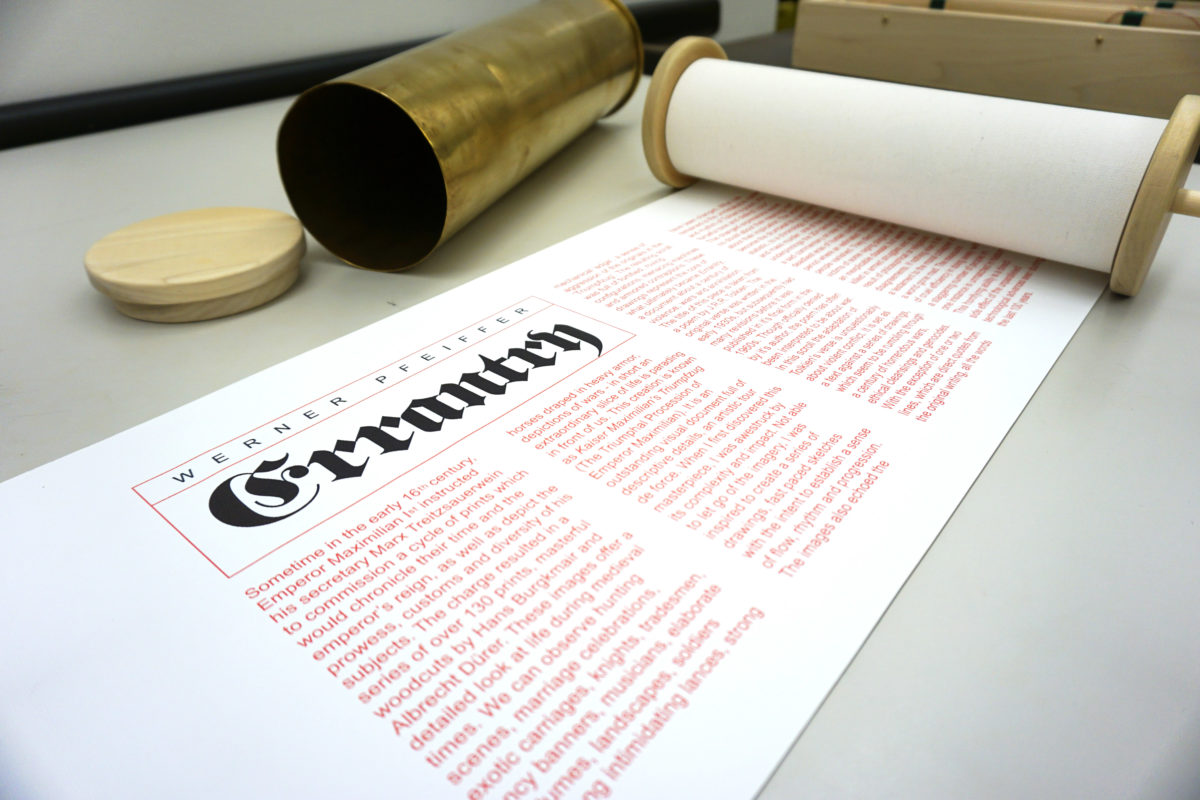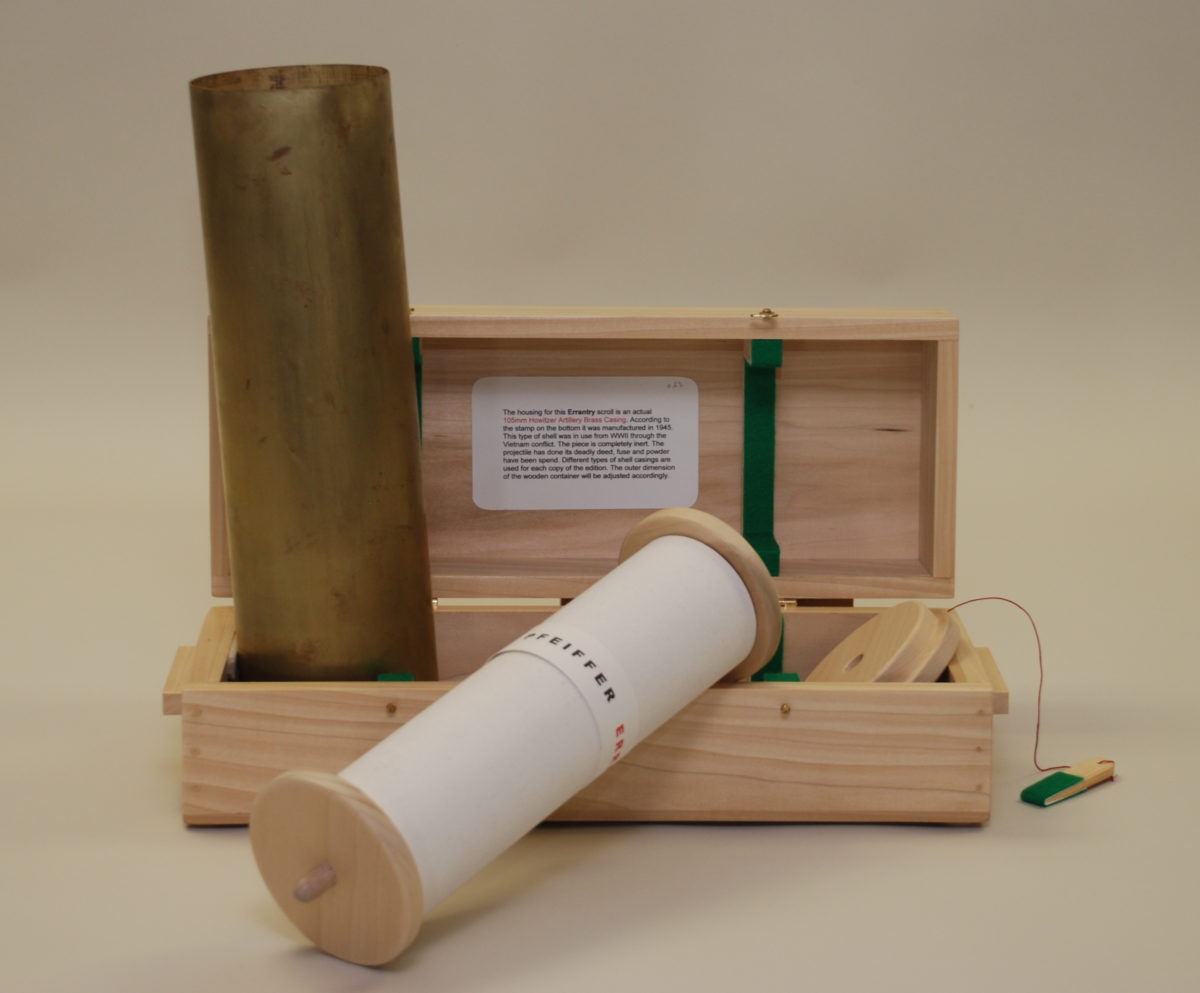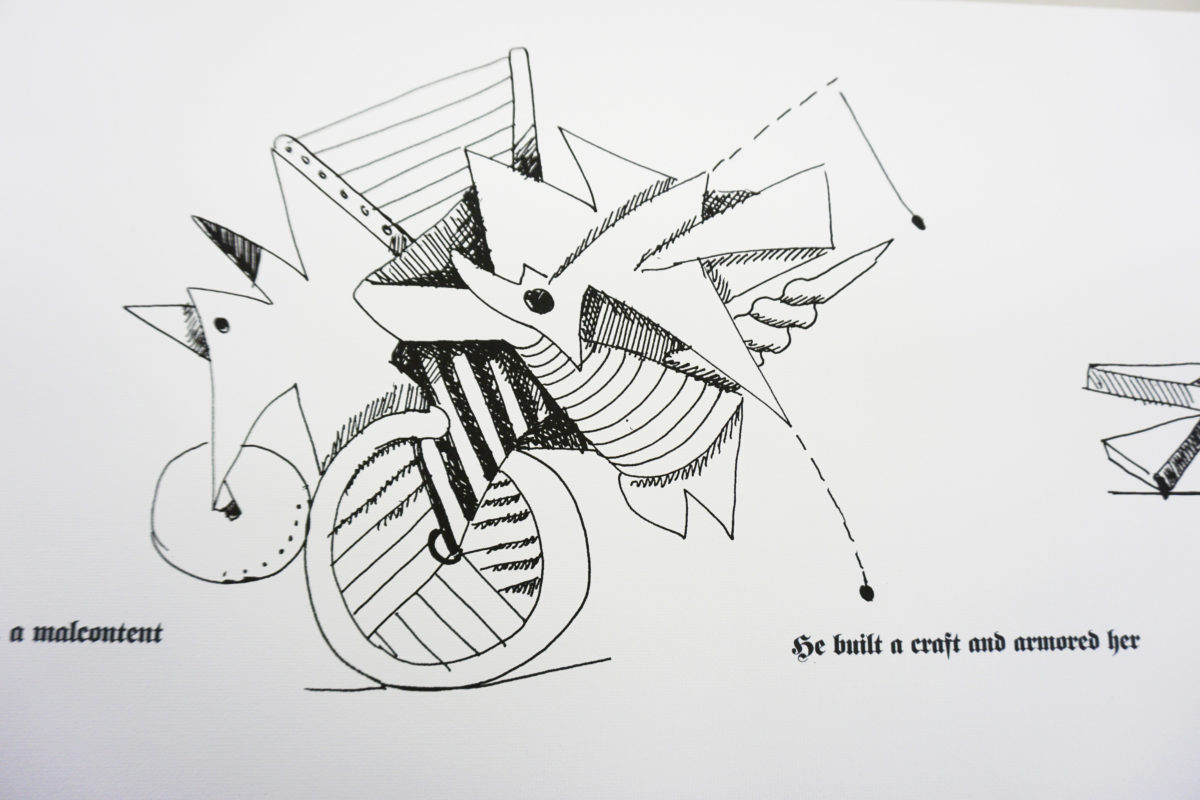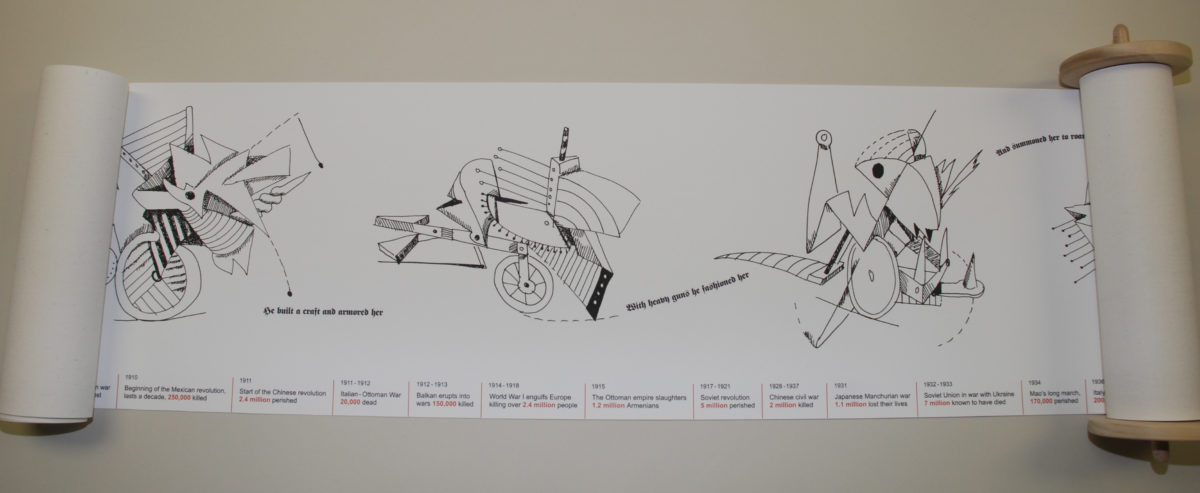Object Lesson is an ongoing series that highlights some of the art, artifacts, machines, devices, books, instruments and tools that give physical form to ideas that enhance the MIT campus and community.
What is Errantry?
Errantry is an artist book by Werner Pfeiffer that was recently acquired by the Rotch Library.
It is a scroll inspired by a 16th-century graphic cycle called Emperor Maximilian’s Triumphant Procession. This document features militant characters parading their arms on horse, by carriage or on foot. Their aggressive postures influenced the drawings in Errantry.
The title and text are based on a poem written by J.R.R. Tolkien in the 1930s. Pfeiffer points out in his artist statement, “The poem used in this scroll is an adaptation, with only two or three lines directly quoting the original. What is similar is the syntax, rhyme and meter of Tolkien’s writing. The text and images are set against a chronology of war, conflict, and genocide in the 20th century.”
Who made it?
Werner Pfeiffer, a distinguished book artist, made Errantry. He emigrated to the US from Germany in 1961 and joined the art faculty at Pratt Institute in New York in 1969. He lives in Red Hook, NY, where he works as a sculptor, printmaker and painter.
How did he make it?
Errantry is printed digitally on a 27-foot long canvas, which is housed inside of a deactivated shell casing from 1943. While Pfeiffer mostly relies on traditional methods, such as letterpress printing, handset type, woodblock printing or etching, he does not exclude new processes if, he says, they “enhance what I want to express.” Most of his artist books are produced in limited editions of 10 to 50 copies. Pfeiffer says, “Experiencing my books requires a hands-on attitude. Touching, folding and manipulating components are integral parts of ‘reading’ the story.”
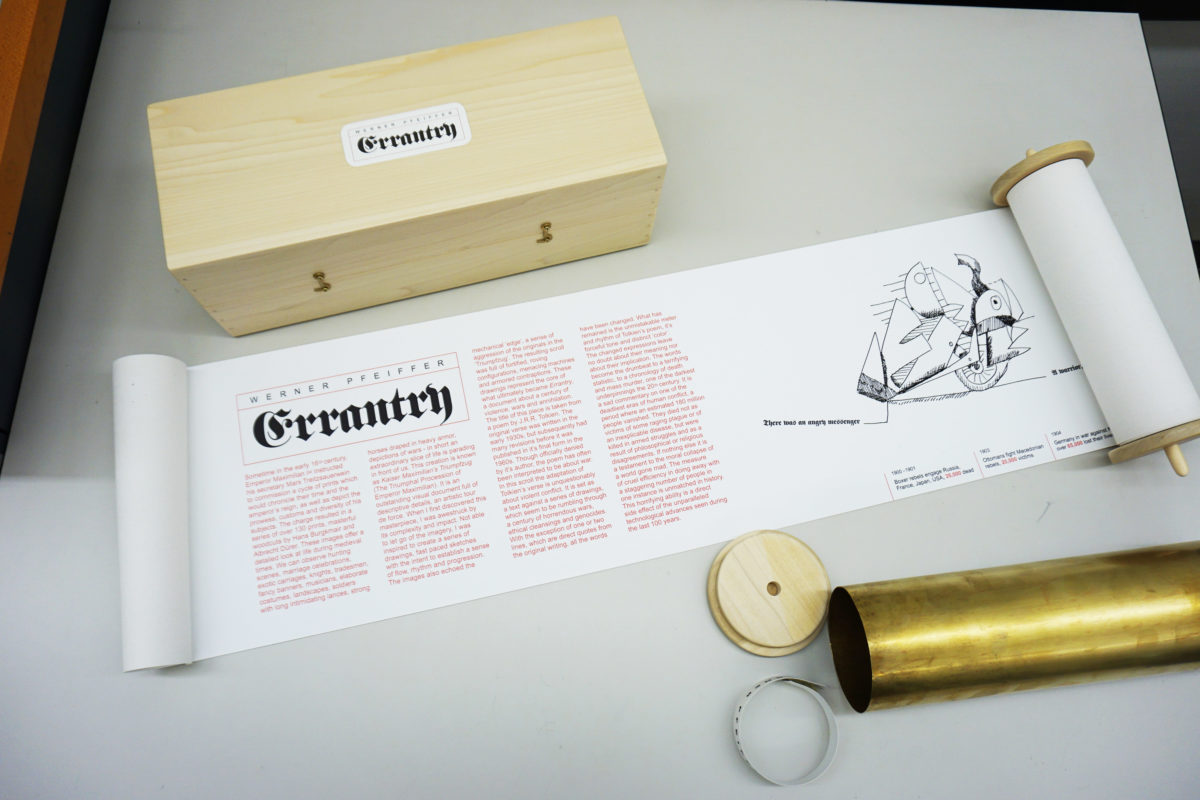
When and where can I see it?
“Unfurling Errantry” takes place on November 9 (coinciding with Veterans’ Day), 4-5:30pm. The 27-foot scroll will be unrolled in the Rotch Library Map Room (7-238). The evening will also feature opportunities to interact with Pfeiffer’s other work in the Rotch Limited Access Collection.
Apart from the special Veterans’ Day event, you can see Pfeiffer’s work and other artists’ books by request during regular library hours.
Why is it significant?
Anna Boutin, Librarian for the School of Architecture + Planning, explains, “At Rotch Library, we collect artists’ books, which are a form of contemporary art that engages with the codex in form, concept or material. They can have large press runs, like Ed Ruscha’s famous Twentysix Gasoline Stations, or be part of a small editions, printed by the artists themselves. Key to the genre, however, is the artist’s complete creative control over the piece. Of particular interest to MIT are pieces that are made from unusual materials, feature unique architectural design, or incorporate nontraditional materials, so adding Errantry to our growing collection was an easy decision. Due to the scarcity of the materials used in the piece, particularly the deactivated shell casing, this book has a finite production—and we were able to secure one of the last available editions. The materiality of artists’ books in general is often varied and intriguing, but Errantry stands out with its sheer size, and the way in which the scroll pairs with the casing to truly stop observers in their tracks to contemplate.”

